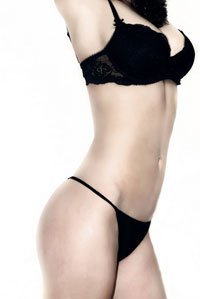 A new survey revealed that women would be willing to trade years of their lives if that meant they could have their ideal body shape and weight. Sixteen percent said they would trade 1 year of their life for their ideal body, and 10 percent would trade 2 to 5 years of their life.
A new survey revealed that women would be willing to trade years of their lives if that meant they could have their ideal body shape and weight. Sixteen percent said they would trade 1 year of their life for their ideal body, and 10 percent would trade 2 to 5 years of their life.
The survey of 320 women (average age of 24 years) was conducted at 20 British universities and also found that almost 40 percent of participants would consider cosmetic surgery if money wasn’t a concern. Of those who said they would have cosmetic surgery, 76 percent desired multiple surgical procedures, and 5 percent reported they had already had a cosmetic procedure to alter their appearance.
The survey also found that in order to achieve their ideal body weight and shape, 26 percent of those surveyed were willing to sacrifice a variety of things, including:
- £5000 from their annual salary (13%)
- A promotion at work (8%)
- Achieving an honors degree (6%)
- Spending time with their partner (9%)
- Spending time with their friends (9%)
The survey revealed that 46 percent said they had been ridiculed or bullied because of their appearance, and 93 percent said they had had negative thoughts about their appearance during the past week.
Cosmetic surgery offers women many options for improving the body’s appearance, such as liposuction and tummy tuck surgery. For those that undergo bariatric surgery to reduce their weight, there is a variety of body contouring procedures available to lift and tone the body after significant weight loss.
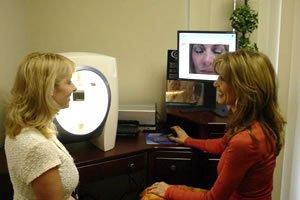 The Beauty Brains is a blog that features scientific answers to common health and beauty questions.
The Beauty Brains is a blog that features scientific answers to common health and beauty questions.
Today, they answered a question about VISIA Skin Analysis, a device that we use at Inland Cosmetic Surgery.
The verdict on VISIA, according to The Beauty Brains is:
For the most part, it’s useful in establishing the baseline condition of your skin before treatment and then showing how much better your skin is after treatment. For example, if you’re being treated with a skin lightening product such as Meladerm, VISIA can measure the reduction of melanin in your skin and thus prove your skin has been lightened.
This kind of analysis can be useful in two ways: it provides the spa a basis for recommending skin treatments to you and it gives them a way to prove to you that their skin lightening treatment is really working.
Read the rest of the post and “the bottom line” for more information. See our website to read more about VISIA at Inland Cosmetic Surgery.
A team of more than 30 doctors and other providers led by plastic surgeon Dr. Bohdan Pomahac at Brigham and Women’s Hospital in Boston performed the first full face transplant in the U.S on a 25-year-old construction worker from Texas who was disfigured in a power line accident.
The man received a new nose, lips, skin, muscle and nerves from an unidentified donor. The U.S. military paid for the operation, and it plans to use knowledge gained from the procedure to help soldiers with severe facial wounds.
Dr. Pomahac said the man will not resemble “either what he used to be or the donor,” but something in between. “The tissues are really molded on a new person.”
The operation, which took 15 hours, was not able to restore the man’s sight, and some nerves were so badly damaged from his injury that he will probably have only partial sensation on his left cheek and left forehead, the surgeon said.
About a dozen face transplants have been done worldwide, in the U.S., France, Spain and China. This was the third in the U.S.; the first two performed in this country were partial transplants. Previously we posted about the country’s first ever 80 percent face transplant performed at the Cleveland Clinic.
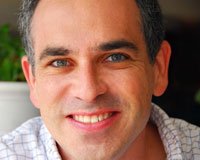 Cosmetic surgery procedures performed on men were up 2 percent in 2010 compared to 2009, in part due to aging boomers who want to look their best and stay competitive in the job market.
Cosmetic surgery procedures performed on men were up 2 percent in 2010 compared to 2009, in part due to aging boomers who want to look their best and stay competitive in the job market.
The statistics from the American Society of Plastic Surgeons revealed the increase and some surgical procedures, including face lifts and liposuction, showed large increases among men (14 percent and 7 percent, respectively).
Dr. Phillip Haeck, the society’s president, said the increase in face lifts is largely driven by men in their 50s and 60s.
“That’s the leading edge of the baby boomers,” he said. “These are really fit people who have paid a lot of attention to keeping their bodies in shape.” But, he said, they’re getting a “turkey neck,” which is something exercise won’t get rid of.
“This generation has paid a lot of attention to how they look, and they don’t want to grow old gracefully,” he added.
Haeck has also seen men come in for procedures to look younger while looking for work. He said men have told him: “You’ve got to do something to help me because I need a job and I’m afraid I’m going to lose out because people are going to think I look too old.”
Breast reductions for men, which increased by 6 percent, on the other hand, are usually performed on men younger than 30, according to Haeck. “For them it’s a lot of money, but they are tired of being embarrassed by it,” he said.
Nose surgery remained the number one surgical procedure for men, and Botulinum Toxin Type A (Botox, Dysport) was the top non-surgical procedure.
Here are the top five cosmetic procedures for men in 2010 (surgical/non-surgical):
- Nose Reshaping / Botulinum Toxin Type A
- Eyelid Surgery / Laser Hair Removal
- Liposuction / Microdermabrasion
- Breast Reduction in Men / Chemical Peel
- Hair Transplantation / Soft Tissue Fillers
 In past updates, we have discussed blepharoplasty (eyelid surgery). First of all, it is important to recognize that brow and eyelid surgery are closely related, but there are significant differences. Brow lifting can lead to improvement in the appearance of the eyelid, while eyelid surgery does not significantly effect the appearance of the brow; although overzealous upper eyelid surgery can result in some brow droop.The most important question that patients ask is “when should brow elevation be carried out.” The answer, while obvious, is often overlooked. Brow surgery is indicated when the patient complains of the “Tired Look” even though they have had a restful night of sleep. They feel that a drooping brow detracts from his or her appearance. In many cases, a low brow can be very attractive, Many attractive models and actresses have a droopy brow which can impart a very sultry or sexy appearance. The actress, Brooke Shields is only one example.
In past updates, we have discussed blepharoplasty (eyelid surgery). First of all, it is important to recognize that brow and eyelid surgery are closely related, but there are significant differences. Brow lifting can lead to improvement in the appearance of the eyelid, while eyelid surgery does not significantly effect the appearance of the brow; although overzealous upper eyelid surgery can result in some brow droop.The most important question that patients ask is “when should brow elevation be carried out.” The answer, while obvious, is often overlooked. Brow surgery is indicated when the patient complains of the “Tired Look” even though they have had a restful night of sleep. They feel that a drooping brow detracts from his or her appearance. In many cases, a low brow can be very attractive, Many attractive models and actresses have a droopy brow which can impart a very sultry or sexy appearance. The actress, Brooke Shields is only one example.
Let’s assume for our discussion today, that both the patient and surgeon agree on a goal of brow elevation. What are the alternatives? The simplest is a procedure that lifts the brow through the placement of a suture that is attached to the scalp – a very simple operation that we tried several years ago with initial promising results but unfortunately failed in the long run. This supports our overall contention that simple suture techniques currently being widely promoted are not substitute for more definitive operations. Basically, mini-surgery leads to mini results.
Direct Brow Lift: Among the more definitive operations, there are several choices. The simplest is an operation called the direct brow lift. In this operation, an incision is made in the brow, after which skin is removed above and the brow is sutured to its elevated position. The operation works quite well except for one major problem. Unfortunately, the scar, even when hidden in the brow, is quite unpredictable and often becomes rather apparent. For this reason, the operation is rarely recommended. Exceptional cases would include those where there is a great deal of excess brow and where a scar would be more acceptable. An example would be and older patient where the brow droop is actually contributing to visual impairment
Mid Forehead Lift: In this operation, an incision is made in the forehead within a forehead crease. Again, skin excision is used to lift the forehead and brow. Once again, the limitation is the fact that the scar may prove overly visible. Its indications, while unusual, include patients (almost always men) with natural deep forehead lines which are likely to hide the scar, combined with a receding hairline which can make other techniques more difficult or impossible.
Endoscopic Forehead/Brow Lift: This has certainly become the most common form of brow and forehead lifting today. Like the traditional lift, it frees up the forehead, brow and scalp, allowing an upward rotation with strong fixation. The advantage over the traditional lift lies in the fact that very small incisions are used with dissection carried out largely under endoscopic visualization. All of the incisions are within the hairline and so there is virtually no visible scarring. In our practice, this operation is most commonly carried out in conjunction with traditional facelifting in patients seeking a combined upper, mid and lower lift. It does add some operating time, but in general, does not increase recovery time.
Coronal Forehead/Brow Lift: This was the original approach to lifting the forehead and brow. The surgery is carried out through a long incision – usually across the top of the head, but sometimes made right at the top of the hair line. The original technique involved lifting through excision of skin and tightening through the closure of the incision, although now, we no longer routinely remove tissue, but, rather, use fixation similar to the endoscopic technique. In rare cases, excision of forehead skin can be used to reduce an overly long forehead. the main advantage of the open coronal lift lies in the fact that the increase surgical exposure allows for additional contour of bone, or the use of implants for structural improvement.
Extended Subperiosteal Coronal Lift: This operation is actually an extension of the traditional coronal lift that allows us to also provide a strong lift to the mid face as well as the forehead and brow. It is one of the most powerful facelifts that we offer. Our experience has shown us that the results are far more lasting than other types of facelift procedures. This operation is primarily indicated in younger patients who are concerned about upper and mid face rejuvenation with less concern about the neck. It offers improvement down to the jowl but not into the neck. Of course, it can be combined with other procedures to rehabilitate the neck. Highlights of the procedure are: brow elevation, an elevation of the outer corner of the eye, a natural elevation of the cheekbone area and an elevation, albeit slight, of the corner of the mouth.As you can see, we have quite a few options when it comes to treating the brow. The actual choices you make will require a personal consultation, but this should at least give you some background information that will assist you in asking the right questions during your visit with a cosmetic surgeon.
Feel free to ask your questions via facebook at www.facebook.com/inlandcosmeticsurgery
Sincerely
Dr. Haiavy
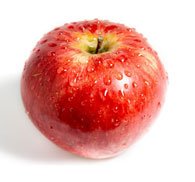 A diet high in fruits and veggies after cosmetic surgery may aid the healing process, according to a new study from Brazil. The researchers wanted to see if the additional intake of fruits and vegetables would result in a reduction of C-reactive protein, a marker of inflammation and infection.
A diet high in fruits and veggies after cosmetic surgery may aid the healing process, according to a new study from Brazil. The researchers wanted to see if the additional intake of fruits and vegetables would result in a reduction of C-reactive protein, a marker of inflammation and infection.
Researchers asked 60 women (age 25-60) undergoing cosmetic abdominal surgery to eat six servings each of fruits and vegetables a day during the first month following surgery. According to the researchers, “fruits and vegetables are attractive tools for the combat of inflammation because of their rich endowment of anti-inflammatory vitamins.”
Participants started the diet on the third day after surgery and continued it for four weeks afterward. Interviews were held with participants the second and third week to rule out changes in dietary habits and to reinforce compliance with the diet.
The supplemented participants had more substantial fruit (5.2 vs. 3.9 servings, approximately) and vegetable (5.9 vs. 3.4 servings) consumption compared to the control group.
Results showed that C-reactive protein diminished in both groups, but a “more expressive decrease could be demonstrated for the high fruit and vegetable participants.”
The authors concluded that increasing servings of fruits and vegetables after surgery can be a feasible strategy to reduce C-reactive protein in adults. They also recommended future studies that focus on additional inflammatory markers, different disease contexts and longer periods of supplementation and follow-up.
The full study can be accessed through Pubmed.gov.
Two women recently shared with the TODAY Show how they got their ideal breast size through breast surgery: one with breast augmentation and the other with breast reduction surgery.
Visit msnbc.com for breaking news, world news, and news about the economy
Erica says before her breast augmentation she described herself as being in the “negative category” for breast size.
Jeanne was a triple D and only 4’9” and says it was a constant struggle for her to be active in her small frame before her breast reduction. In addition, she had neck, back and shoulder pain and rashes under her breasts.
Both women wanted to be a C cup, and they achieved it through breast surgery.
The women appeared on the TODAY Show about two weeks after their surgeries. Jeanne says that after surgery she saw her stomach for the first time in the shower.
Erica, who chose silicone implants, says breast augmentation is something she’s always wanted to do and that she’s more than happy with the results.
The women’s surgeon, Dr. Steven Teitelbaum, says that there is more scarring with breast reduction than augmentation, although the scarring for reductions is less than it used to be and that surgeons have gotten better at shaping the breasts in reductions.
 Do different nationalities prefer different cosmetic surgery procedures? A New York Times article finds that often different ethnic groups choose procedures that are “tailored to their cultural preferences and ideals of beauty.”
Do different nationalities prefer different cosmetic surgery procedures? A New York Times article finds that often different ethnic groups choose procedures that are “tailored to their cultural preferences and ideals of beauty.”
“When a patient comes in from a certain ethnic background and of a certain age, we know what they’re going to be looking for. We are sort of amateur sociologists,” said Dr. Kaveh Alizadeh, of Long Island Plastic Surgical Group.
Here are examples of some of the ethnic trends doctors interviewed for the story reported seeing:
- Egyptians are getting face lifts.
- Iranians favor nose jobs.
- Dominicans are getting buttocks lifts.
- Russian women favor breast augmentation.
Cosmetic surgery has been growing in populartiy within ethnic groups in the United States. A 2010 survey by the American Academy of Cosmetic Surgery revealed that more than half of the respondents thought the popularity of cosmetic surgery had grown among members of their racial/ethnic group in the last five years.
Motivations for ethnic cosmetic procedures seem to have changed according to Victoria Pitts-Taylor, a sociology professor at Queens College. She said that in the early days of cosmetic surgery immigrants underwent procedures to try to look “more American.”
Today, however, rather than trying to fit in, many immigrants have procedures that reflect their home culture’s trends.
“My patients are proud of looking Hispanic,” said Dr. Jeffrey Yager, whose office is in a largely Dominican neighborhood in Manhattan. “I don’t get the patients who want to obscure their ethnicity.”
One Dominican patient of Dr. Yager’s is Italia Vigniero, 27, who got breast implants in 2008 and is considering a buttocks lift. “We Latinas define ourselves with our bodies,” she said. “We always have curves.”
The doctors pointed out that in addition to their own cultures, immigrants are also influenced by American pop culture and reality TV shows about cosmetic surgery.
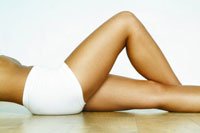 There are a variety of liposuction techniques, from an ultrasound-assisted liposuction device to a laser, but which ones do surgeons prefer? A new survey revealed that suction-assisted lipectomy (SAL), which is considered traditional liposuction, was the preferred method of fat removal for over half of the plastic surgeons who responded.
There are a variety of liposuction techniques, from an ultrasound-assisted liposuction device to a laser, but which ones do surgeons prefer? A new survey revealed that suction-assisted lipectomy (SAL), which is considered traditional liposuction, was the preferred method of fat removal for over half of the plastic surgeons who responded.
“In a field that is so rapidly advancing, it is essential to continually evaluate new technologies and methods to ensure that we maintain the safety of our patients,” said Jamil Ahmad, MD, lead author of the survey, which was published in the February issue of the Aesthetic Surgery Journal.
The survey explored surgeons’ preferences on liposuction, and for the 492 who responded, the preferred method of fat removal from most to least popular was:
- Suction-assisted lipo (SAL) (51.4 percent)
- Power-assisted lipo (PAL) (23.0 percent)
- Ultrasound-assisted lipo (UAL) (20.9 percent)
- Laser-assisted lipo (LAL) (3.9 percent)
Most of the surgeons who responded perform between 51 and 100 liposuctions per year, and they had the most experience with SAL, UAL and PAL liposuction. The surgeons had less experience with laser-assisted liposuction (12.8 percent), mesotherapy (5.7 percent) and noninvasive devices (12.8 percent).
“Our survey found that ASAPS members tend to more frequently employ the fat removal methods that have the longest track records and the most data to support their efficacy and safety,” said Ahmad. “In the future, we may notice preferences shift as we see additional prospective data comparing techniques, and as we gain more experience with newer methods. These factors will also help us continue to improve safety-related standards of care.”
Dr. Haiavy performs traditional liposuction (suction-assisted liposuction) and VASER liposuction, which uses ultrasound technology for fatty tissue emulsion and aspiration.
FDA APPROVES EXPANDED USE OF LAP-BAND® ADJUSTABLE GASTRIC BANDING SYSTEM FOR OBESE ADULTS Obese Adults with a BMI of 30-40 with at Least One Obesity Related Comorbid Condition Now Qualify for LAP-BAND® System Procedure When All Other Conservative Weight-loss Therapies Have Failed
Obesity is the second-leading cause of preventable death in the United States, second only to smoking.
To view Lap Band Patient testimonials, visit our surgical site at https://www.surgicalartsinlandempire.com/lap-band-patient-story-1.html
Allergan, Inc. (NYSE: AGN) today announced the U.S. Food and Drug Administration (FDA) approved the expanded use of the LAP-BAND® System, Allergan’s gastric band, for adults with obesity who have failed more conservative weight reduction alternatives, such as diet and exercise and pharmacotherapy, and have a Body Mass Index (BMI) of 30-40 and at least one obesity related comorbid condition.
Currently, approximately 37 million Americans have a BMI of 30-40 and at least one comorbid condition,1,2 underscoring obesity as a growing health epidemic in the United States and the need for additional effective treatment options. 3 Given its known correlation to life-threatening comorbid conditions, such as heart disease, stroke, Type 2 diabetes, high blood pressure, sleep apnea and even premature death, obesity is a disease that requires medical treatment. Medical research has found that, if left untreated, those individuals who are currently obese will likely remain obese.4 However, not all weight-loss treatments are effective over the long term – as a preponderance of data, published literature and scientific research have found that diet and exercise is unsuccessful in 80-85% of patients at one year.5,6
To view Lap Band Patient testimonials, visit our surgical site at https://www.surgicalartsinlandempire.com/lap-band-patient-story-1.html
![IMG_3385_sm[1]](/wp-content/uploads/2011/02/IMG_3385_sm1.jpg)